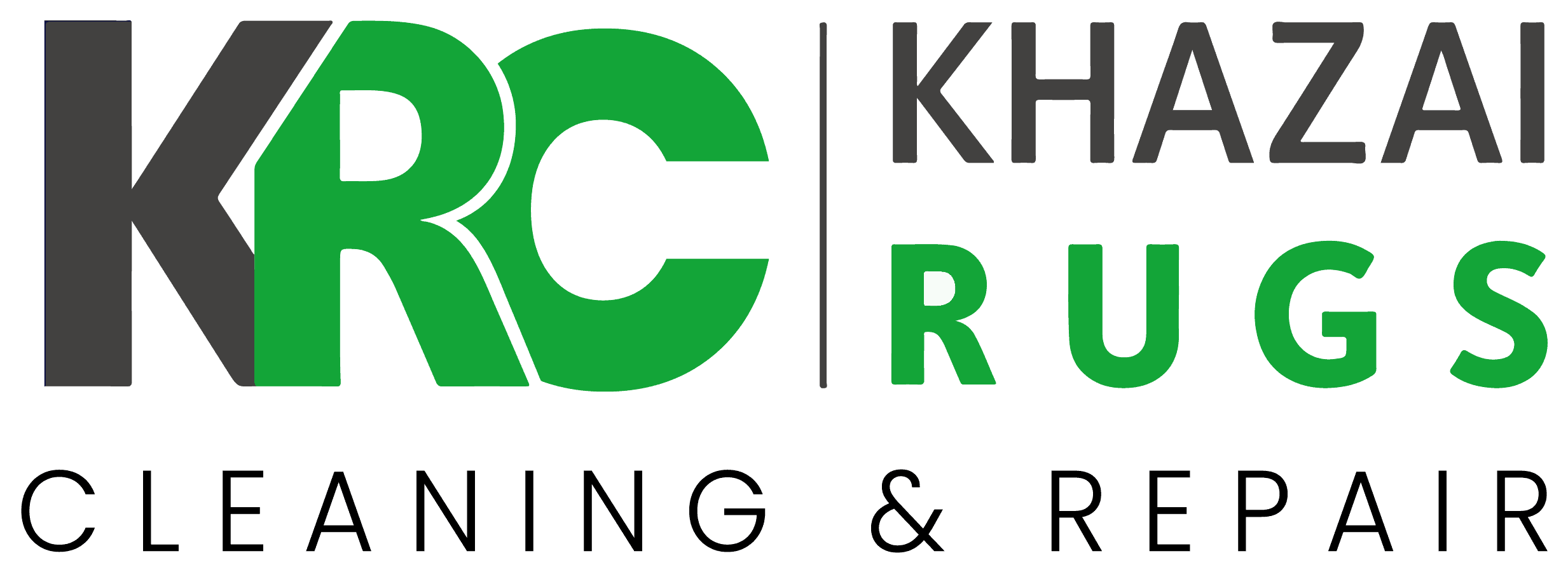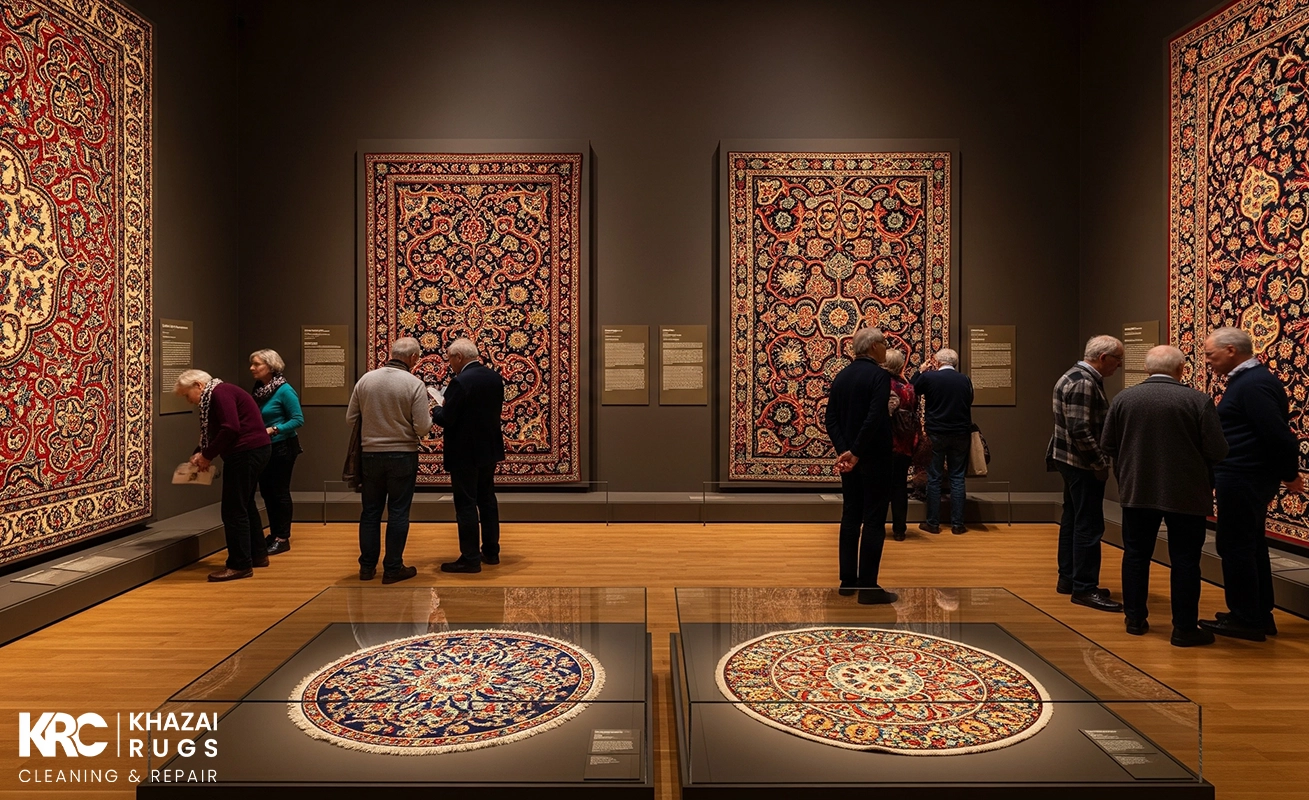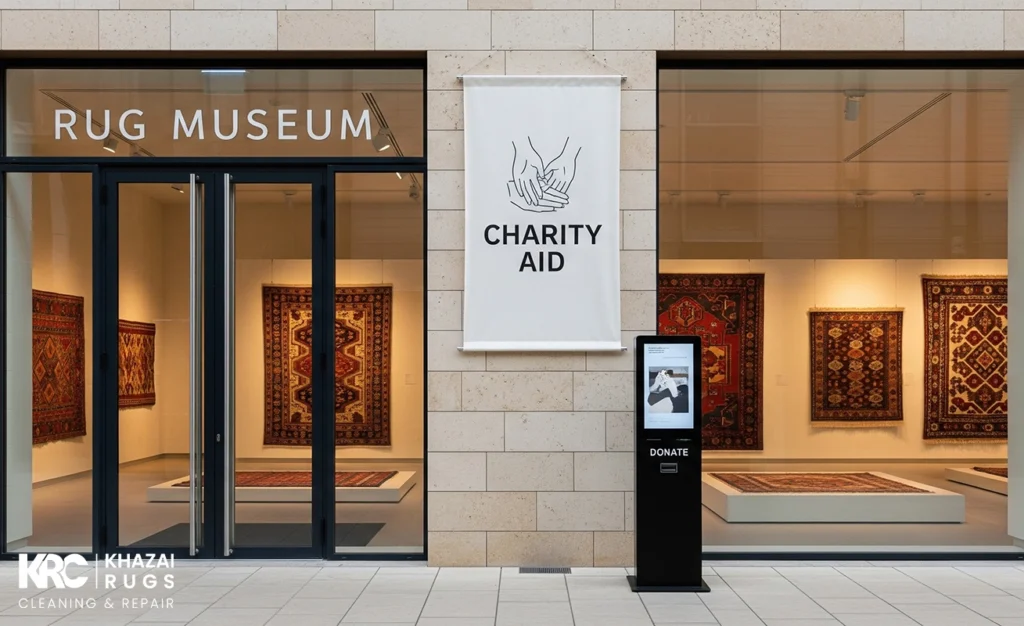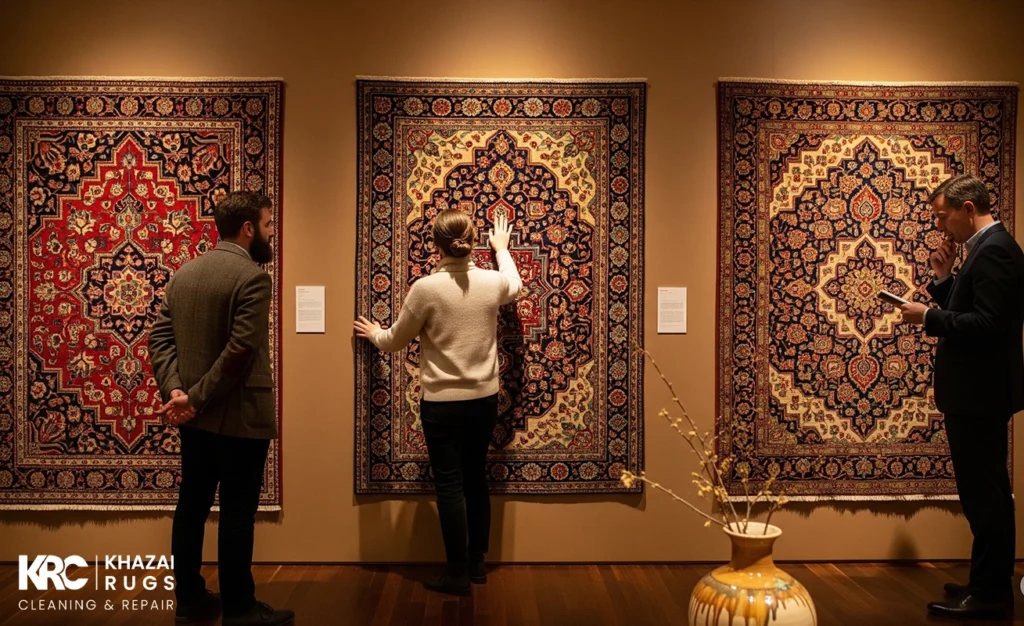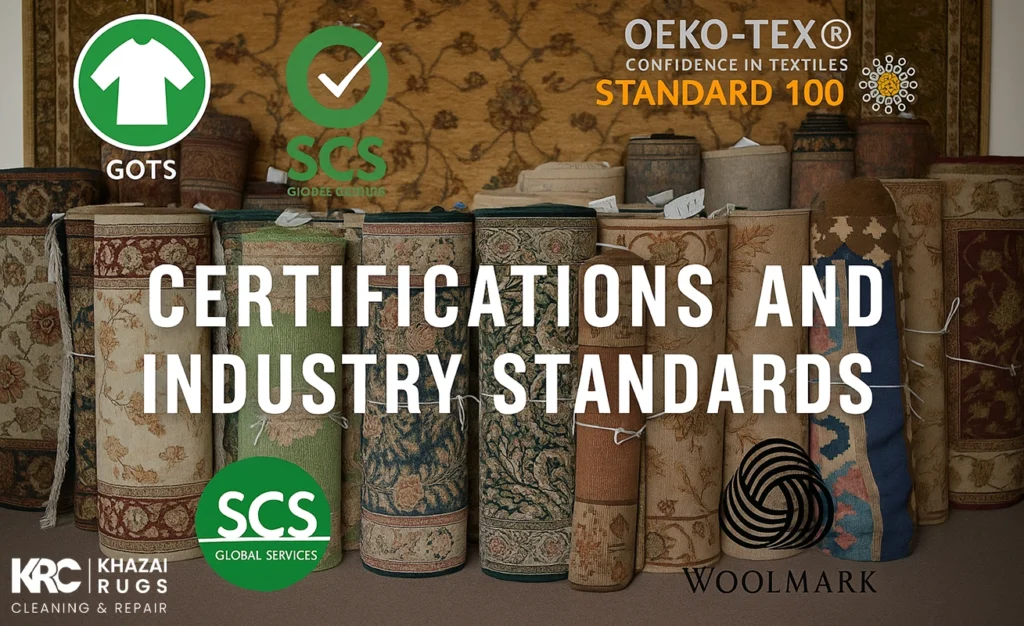Read Time: 7 minutes.
Museum rugs carry stories, donors, and paperwork that must stand up to daylight. This article lays it all out: how Rug Appraisals for Museums protect heritage, guide acquisitions, and make tax filings cleaner. We’ll touch on fair market value, provenance, and everyday systems that help teams keep records sharp. We’ll also note the tax benefits of Rug Appraisals and why good reporting supports confident decisions. For clarity, we use plain language and real-world examples of cultural asset evaluation. So, let’s get to it.
The Importance of Rug Appraisals for Museums
A solid appraisal program anchors preservation, recordkeeping, and insurance. In practice, Rug Appraisals for Museums frame every decision, from display to storage, and tie into cultural asset evaluation standards. Early in the process, our Rug Appraisal Service gives teams a clear baseline and a paper trail that holds.
Preserving Cultural Heritage Through Appraisals
Appraisals document age, origin, materials, and condition so conservators know what matters most. For living collections, the map guides treatment decisions and funding priorities. Over time, Rug Appraisals for Museums become a running log of change—useful for conservation goals and cultural asset evaluation audits. Fewer surprises, fewer last‑minute scrambles, and a better shot at long, healthy display lives.
Building Transparent Collection Records
Clean data builds trust. Appraisals align titles, donor notes, accessions, and images, then connect them to valuations that can be traced. Rug Appraisals for Museums make it easier for registrars to match paperwork to objects, and for curatorial teams to report confidently. The same detail supports cultural asset evaluation reviews, board updates, and outside audits without derailing daily work.
Ensuring Accountability and Insurance Compliance
Insurers want current values, clear condition notes, and photos. Rug Appraisals for Museums provide exactly that, along with comparable sales and methodology. If there’s a loss, teams have the file ready—valuation basis, dates, and who signed off. That proof streamlines claims and satisfies risk managers who need orderly records that match policy riders and loan agreements.
How Rug Appraisals Support Museum Acquisitions
Before new rugs enter the collection, staff need defensible numbers and context. Rug Appraisals for Museums set fair market value, flag risks, and provide comps that help committees decide quickly while staying grounded in evidence.
Establishing Fair Market Value Before Purchase
Appraisals define FMV using recent, relevant sales, accounting for maker, age, materials, rarity, and condition. That clarity prevents overpaying and shows why a price is reasonable. Committees can point to a real method instead of wishful thinking. Rug Appraisals for Museums also compare similar pieces so curators can choose with confidence and document the decision trail.
Justifying Grant and Donor-Funded Acquisitions
Grant officers and donors care about transparency. A current appraisal shows the piece’s standing in the market and why it belongs in the collection. That helps justify requests and post‑award reports. When donors ask how the value was set, staff can cite the report: comps, photos, and sources. It keeps the conversation steady and respectful.
Tax Benefits Linked to Rug Appraisals for Museums
The tax angle affects donations, deaccessioning, and estate gifts. A strong file shows the tax benefits of Rug Appraisals and ties them to verified numbers from qualified professionals. Rug Appraisals for Museums also reduce stress during reviews. This information is general; for specific matters, consult a qualified tax professional.
Enabling Charitable Contribution Deductions
For donors, a qualified appraisal supports deduction claims and clarifies the value of gifted rugs. Museums benefit when gifts are well documented, and donors know what the IRS expects. By putting the tax benefits of Rug Appraisals into plain language, teams can guide donors to the right forms and timelines, reducing back‑and‑forth and keeping gratitude front and center.
Satisfying IRS Requirements with Certified Reports
Certified appraisers follow accepted standards and provide signed reports with methodology and comparables. That structure matches IRS expectations and eases due diligence. When needed, our Rug Appraisal Service produces reports aligned to current practice. This approach supports the tax benefits of Rug Appraisals while helping staff maintain orderly files across multiple fiscal years.
Avoiding Legal Pitfalls in Tax Filings
Errors happen when values are outdated, sources are thin, or the signer isn’t qualified. A current, well‑supported appraisal reduces exposure and keeps counsel calm. Internal reviews also help spot gaps before filings go out. The best defense is a consistent process that documents assumptions and supports the tax benefits of Rug Appraisals through clear evidence.
What Qualifies as a Museum-Grade Rug for Appraisal?
Not every rug fits curatorial goals. Selection criteria focus the pipeline so staff spend time on pieces that count. Rug Appraisals for Museums apply shared standards and feed cultural asset evaluation with details curators rely on: history, rarity, materials, technique, and condition.
Historical and Artistic Relevance
Age is helpful, but story drives value. Rugs tied to a region, movement, or maker fill curatorial gaps and deepen exhibitions. A 19th‑century Tabriz with strong motifs and a known workshop adds depth. Good reports connect art history and market signals, strengthening cultural asset evaluation and giving stakeholders a clear reason the object deserves care and resources.
Rarity and Provenance as Key Indicators
Provenance can lift value dramatically. Verified ownership chains, early photos, and catalog entries create durable confidence. Rug Appraisals for Museums weigh rarity, survival rates, and the strength of documentation to place a piece within its peer group. Strong files help curators defend choices in meetings and avoid long detours during board reviews and outside audits.
Material and Weaving Techniques Matter
Technique and materials say a lot about origin and longevity. Hand‑knotted wool with natural dyes, or silk wefts with fine counts, behave differently over time. Appraisals note these factors, flag conservation needs, and suggest safe display practices. That guidance informs budgets, schedules, and treatment priorities so teams can plan with calm and clarity.
How Rug Appraisals Enhance Collection Management
Good appraisals don’t sit in a drawer. They feed catalogs, prep shows, and guide handling and display. Rug Appraisals for Museums also support cultural asset evaluation by linking each object to current status, value, and risk notes that everyone can find.
Organizing Catalogs and Exhibition Planning
Accurate valuations sync with accession data, object files, and high‑res condition photos. That makes it simple to sort by theme, region, or century and to flag light exposure limits or installation needs. Appraisal notes—dimensions, fiber type, dye stability—flow into labels, wall texts, and floor plans. Tie those fields to your cultural asset evaluation criteria, and reports come together in minutes. Curators draft narratives faster, registrars keep records aligned, and previews run smoother with fewer last‑minute edits.
Managing Loans to Other Institutions
Loans go smoothly when values and conditions are current. Appraisals inform courier needs, shipping insurance, and display parameters. For long‑term agreements, numbers and notes help shape crates, mounts, and storage. Our Rug Storage Service supports safe rest periods between shows so fibers recover, dyes stay happy, and schedules stay sane.
Choosing the Right Appraiser for Museum Rugs
People matter as much as methods. Teams want specialists who know historic carpets, follow standards, and can speak plainly. Rug Appraisals for Museums work best when certified experts document their process, show comparables, and coordinate smoothly with registrars and curators.
Credentials to Look For in a Certified Appraiser
Look for affiliation with recognized organizations and current ethics training. Clear methodology, signed statements, and dated photos should appear in every file. Reports that cite sources and comps make life easier during audits. Experienced appraisers also adapt to institutional workflows and deliver on time without drama.
Experience with Institutional Collections
Working with museums is different from working with private clients. Schedules, committees, donor relations, and data standards all come into play. Institutional experience means fewer surprises, faster reviews, and smoother board updates. Rug Appraisals for Museums thrive under pros who can speak the language of registrars while keeping curators, development, and finance aligned.
Rug Appraisals for Museums in Estate and Donation Planning
Estate gifts and living donors bring opportunity—and paperwork. Rug Appraisals for Museums clarify value, guide acceptance, and support filings, while cultural asset evaluation keeps quality high so collections grow with purpose.
Facilitating End-of-Life Asset Transfers
Families often want an object’s story to continue. Appraisals give a fair, current value and a practical snapshot of condition. If a gifted rug arrives with spills or pet marks, we can help before cataloging through our Rug Pet Stain Removal Service & Rug Cleaning Service. That way, the first condition report starts clean and the donation experience stays warm.
Meeting IRS Documentation Standards for Donated Rugs
Donors need qualified reports, signatures, and forms that match object files. Clear photos, dates, and comparables are essential. Coordinated timelines prevent last‑minute scrambles around filing season. These steps protect donors while supporting the tax benefits of Rug Appraisals without adding stress to curatorial or registrar teams.
Common Challenges in Museum Rug Appraisals
Even good systems face bumps. Rug Appraisals for Museums get harder when paperwork is thin, markets swing, or condition complicates value. A steady workflow and realistic timelines keep tasks moving, so review cycles don’t snowball.
Authenticity Disputes and Documentation Gaps
Attribution questions can stall decisions. Pulling old catalogs, exhibition records, or family archives helps fill blanks. In some cases, light conservation or stabilization improves readability for photos and reviews, which is where our Rug Repair Service supports the process. Clear notes keep future staff from repeating the same detective work.
Navigating Market Volatility and Valuation Fluctuations
Markets rise and fall. The best response is methodical: current comps, clear reasoning, and time‑stamped files. Regular updates prevent values from drifting too far from reality. When a major sale resets expectations, schedule a review and refresh the numbers. Teams that document their logic move through swings with less friction and more confidence.
Conclusion
A good appraisal program is quiet infrastructure. It protects heritage, speeds up acquisitions, and steadies tax work. Rug Appraisals for Museums link history to numbers, so decisions feel calm rather than rushed. The tax benefits of Rug Appraisals follow when files are complete, photos are crisp, and comparables are relevant. For daily care and long‑term planning alike, cultural asset evaluation paired with practical tools—appraisals, conservation notes, safe storage—keeps collections strong. At Khazai Rug Cleaning, we’re proud to support that work from intake to display, and we’re here when you need a hand.

